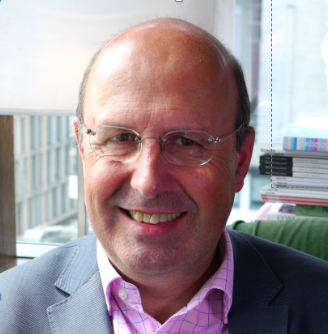You can sign up to our LinkedIn newsletter here.
One of the biggest concerns that I hear from people, when we start talking about a Portfolio Executive workstyle, is that they feel they’ve got to learn how to sell. Many senior professionals have never been in the situation where they’ve seen themselves as a salesperson.
I have never sold a 2nd hand car!
The truth is that you are going to have to find people who will buy your services. But put aside the traditional image of a salesperson, that has been garnered perhaps from the most aggressive second-hand car salesman, your experience of being approached for double glazing, or even the unsolicited calls that you get as you’re preparing to sit down for tea, trying to sell you a new energy or mobile contract.
Building awareness
As a Portfolio Executive the process of enabling others to buy is so far removed from this that you can almost take away the designation salesperson. What does this mean in practice? The first thing is, as a Portfolio Executive you want to focus on building awareness of who you are and what you have to offer, so that you’re attracting people who will be interested in you. This involves building an audience of relevant people who start to attend to you. As part of that you need to have absolute clarity of your offer and absolute clarity of the people who are most likely to want to buy your offer.
Enriching your network
The second thing you need to do as a Portfolio Executive, is to develop and enrich your existing network. I have many Portfolio Executives who have got all their work, since I’ve started working with them, through referrals and through contacts in an existing network. In fact, they would say they’ve never bid for work, they’ve always been invited to talk about opportunities with somebody who already has an interest in their services. This is so far away from any concept of traditional selling.
Extending your network
However, some people do want to build up a wider reach of people beyond their existing network. They do want to run a structured process to enable people to buy. But remember it is not essential. If you are going to go down this route, then I would suggest that you want to build the relationship with a potential buyer, through extending your network on LinkedIn, your existing network of in person relationships, and through new opportunities you may have, to connect with industry or professional bodies.
Building a deeper relationship
I recommend a sequence that looks a little bit like this. You interact with an individual, who could use your services, on LinkedIn through direct messaging. You start to build a relationship by providing them with useful information or getting to know what they’re about. Then you ask them if they would like to have a short chat. The short chat is about relationship building. It’s about showing them that you’re more interested in them than promoting who you are. It’s a great way of showing the value of a relationship with you. I would see this as a way of enriching your network, rather than the first step in enabling them to buy. Prepare the conversation so that they can come away from the chat believing that you’re a knowledgeable person, who is valuable to stay in touch with and who could be of some use in the future. It is not a sales call. The call is about getting to know them, getting to know their needs, offering them value in the conversation. It could be an introduction to somebody in your network. It may be some insight that you’ve got. I quite often ask, ‘if I could introduce you to your ideal client what would they look like?’ or ‘if I could find you your perfect next employee how would they make a difference to you?’
As you build the relationship, you may ask their advice on finding clients who require your services. The more specific you can be about the kind of clients you’re looking for, the more likely you are to trigger a response.
Continuing to show value
Now you’ve got a warm relationship, you can continue to communicate with them when you notice things that are relevant to them. You may even agree to have a regular check in with them. Perhaps you plan something every 6 to 10 weeks, once a term or even once a year. You’ll have a call with them, find out what’s going on, share what’s happening in your market and build the relationship further. In these follow-up conversations ensure you offer them value through advice, introductions to connections or insights into the market, so you increase the strength of the relationship.
Responding to a direct need
When you identify that a person has a direct need for your services and the need is now, you’re ready to move the conversation on. You might ask a simple question like, ‘I wonder if it is worth having a longer conversation about how I could help you to deal with ….?’
If they say ‘yes’, then you have an open door to book an hour with them, to dig deep into what is really happening. In this longer conversation, there are three simple rules to follow:
- Demonstrate you are an expert on the problem, and they will believe you are an expert on the solution. This is not the time to propose a solution.
- Ask open questions to draw attention to how much the problem matters, particularly linking it back to its impact on revenue, cost, and risk for the business. Explore the direct impact on them: is it embarrassing, career limiting, an opportunity to shine if they solve it?
- Explore what they have tried before, how long they have had the problem and why the issue still matters.
At the end of this longer conversation, I would recommend proposing a short piece of work to better understand the full scope of the challenge using a Capability Maturity Diagnostic (see the previous article here).
Enabling people to buy
You don’t have to be a salesperson to be a Portfolio Executive. But that doesn’t mean that you shouldn’t learn the skills that will enable clients to buy.
You need to be able to listen and hear the needs of your potential clients. You need to be able to move a conversation from an interest in buying to a commitment to buy, to an ongoing relationship. For the Portfolio Executives I work with, I do help them to strengthen their skills to enable potential clients to buy. I constantly encourage them to avoid the mentality of a salesperson. People buy people and they buy people who are experts on their problems when they have an identifiable need.
Just enable them to buy!

Charles McLachlan is the founder of FuturePerfect and on a mission to transform the future of work and business. The Portfolio Executive programme is a new initiative to help executives build a sustainable and impactful second-half-career. Creating an alternative future takes imagination, design, organisation and many other thinking skills. Charles is happy to lend them to you.
